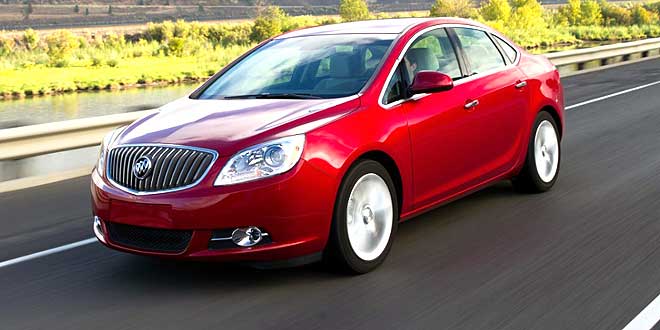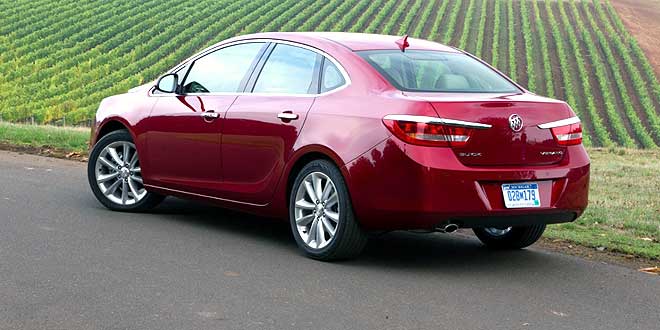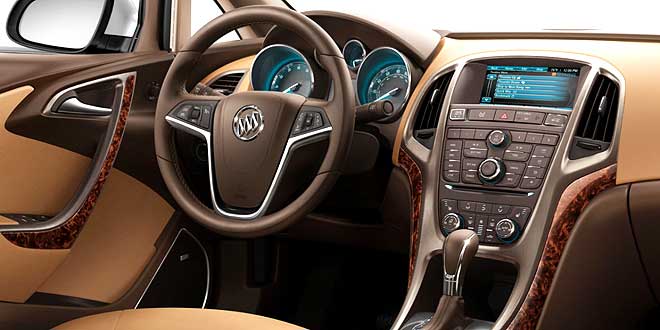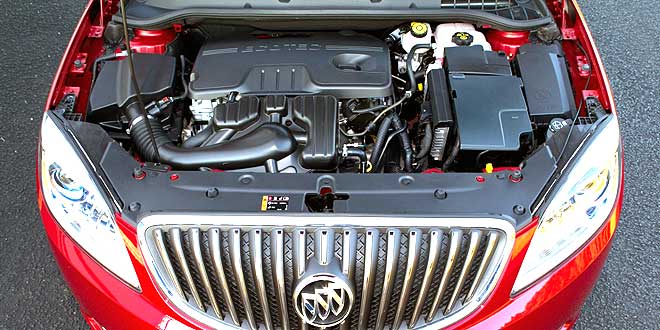- Review
- Fast Facts
Buick built its reputation on big, smooth, quiet cars.
There are plenty of people who buy luxury cars, though — especially the entry-level luxury cars that Buick specializes in — who don’t want their car to feel like something that Grandma would drive.
That’s why the Buick Verano exists.
Built on the same platform as the Chevy Cruze, an eyebrow-raising compact car from General Motors that happens to be one of my favorites, the Verano seems to split right down the middle of the sport vs. comfort battle. It’s something enjoyable enough to make young drivers grin, but it’s squishy and plush enough to make Grandma happy, too.
Until now, the Verano’s biggest downside has been its lack of a powerful engine to compete with the likes of BMW, Acura and Infiniti, all brands that know how to make luxury cars that are lively when you step on the gas pedal.
Buick fixes that problem in 2013 with the addition of a 2.0-liter turbocharged engine that makes 250 horsepower. That’s enough to provide a real thrill in a car this small, helping it accelerate from 0-60 in just 6.2 seconds.
It’s also surprisingly efficient with a 31-mpg rating in highway driving. When you consider that the Verano’s base engine only gets 1 mpg better than the turbocharged model, while making a whopping 70 fewer horses, the turbo engine is the clearly better choice.
It also exposes a new, gaping hole in the Verano’s powertrain lineup: the lack of a more fuel-efficient option for people who want to save money at the gas pump. Many cars this size are rated at over 40 mpg on the highway these days.
Then again, Buick has been trying to position the Verano as a sophisticated, upscale car that just happens to be a compact. Putting a small, whiny, efficient engine in it might only make it feel like a Chevy.
The big question, of course, is whether the Verano is different enough from its Cruze cousin to pay extra for the Buick version instead of getting the cheaper Chevrolet. General Motors has a long history of essentially selling the same car with different badges glued to the hood.
Is that what the Verano is?
For the most part, no. Not at all. It feels like a drastically different car, with a smoother ride, significantly quieter cabin and better, more upscale styling than its Chevy relative. It inherits the Cruze’s small back seat, though, that can limit knee room for tall passengers.
More than anything else, what sets the Verano apart is its cabin. Buick seems to be moving more upscale — taking brands like Lexus more seriously than GM traditionally has done — by using contrasting color stitching, soft-touch dash materials and leathers that feel thick and supple, not plasticky.
If you look at this car as a whole, from its styling to its turbocharged performance and classy cabin, it’s a baby Buick that works exceptionally well. Not only does it offer the affordable luxury that Buick is known for, but it also has the zip and excitement that younger luxury drivers crave.
Pricing starts around $23,000, or roughly $30,000 with the turbocharged engine.
What was tested?
2013 Buick Verano with Leather Group ($27,640). Options: None. Price as tested: $27,640
Why buy it?
It’s a compact luxury car with class. It feels more expensive than it is, and a 250-horsepower turbocharged engine makes it even more enjoyable in 2013.
Why avoid it?
The turbo model costs nearly $30,000, a fairly large premium for an engine upgrade.
RATINGS:
- Style: 9
- Performance: 8
- Price: 7
- Handling: 8
- Ride: 7
- Comfort: 6
- Quality: 8
- Overall: 8
2013 BUICK VERANO SPECIFICATIONS





